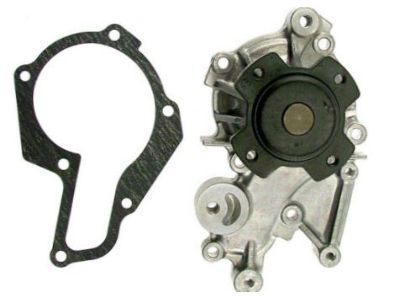My Garage
My Account
Cart
Genuine Chevrolet Metro Water Pump
H2O Pump- Select Vehicle by Model
- Select Vehicle by VIN
Select Vehicle by Model
orMake
Model
Year
Select Vehicle by VIN
For the most accurate results, select vehicle by your VIN (Vehicle Identification Number).
1 Water Pump found
Chevrolet Metro Water Pump
The Water Pump of Chevrolet Metro vehicles is one of the effective components that pumps water from the radiator section toward the engine where it can be warmed up by the heat produced during combustion. Nearly all designs incorporate a belt-driven pump with an impeller that circulates coolant through the engine's galleries. Whereas previous water pumps were tender of cast iron hence easily corroded, latest water pumps are of aluminum cast. There is high performance water pump for high performance engines: it provides more coolant flow ability and less power consumption compared to normal water pump. Electric water pumps are also taking their place and offering advantages, these are; separate coolant circulation, post shut down engine cooling, and so on.
Each OEM Chevrolet Metro Water Pump we offer is competitively priced and comes with the assurance of the manufacturer's warranty for the part. Furthermore, we guarantee the speedy delivery of your orders right to your doorstep. Our hassle-free return policy is also in place for your peace of mind.
Chevrolet Metro Water Pump Parts Questions & Experts Answers
- Q: How to replace a water pump on Chevrolet Metro?A: Disconnect the negative battery cable from the battery. Drain the cooling system. If the coolant is relatively new or in good condition, save it and reuse it. Loosen the water pump pulley bolts. Remove the drivebelt(s). Remove the pulley from the end of the water pump shaft. Remove the timing belt. Remove the bolts and detach the water pump from the engine. Note the locations of the various brackets and the different lengths/diameters of the bolts as they're removed to ensure correct installation. Clean the bolt threads and the threaded holes in the engine to remove corrosion and sealant. Compare the new pump to the old one to make sure they're identical. Remove all traces of old gasket material from the sealing surfaces. Use a bead of RTV sealant to hold the pump gasket in place. Carefully mate the pump to the engine. Slip a couple of bolts through the pump mounting holes to hold the pump in place. Install the remaining bolts. Tighten them to the torque in 1/4-turn increments. Don't overtighten them or the pump may be damaged. Place new rubber seals between the water pump and oil pump and between the water pump and cylinder head. Reinstall all parts removed for access to the pump. Refill the cooling system and check the drivebelt tension. Run the engine and check for leaks.
- Q: What are the ways to check the operation of the water pump while it's installed on Chevrolet Metro?A: The engine can be damaged extensively by a failed water pump that causes overheating. One way of checking the operation of the water pump is to do it while it is still on the engine. However, if it is defective, replace it with a new one or rebuilt unit. Squeeze the upper radiator hose with the engine running at normal operating temperature. When the hose is released, one should feel a pressure surge if the water pump is functioning correctly. Water pumps are constructed with weep or vent holes. If there is a failure in a pump seal, coolant will come out through this hole. You'll probably need a flashlight to locate such a hole on the water pump for leak testing purposes. The failure of water pump shaft seal causes leakage from the water pump weep hole due to which it eventually drips coolant. In case bearings of water pump shafts fail while an engine is running you may hear some humming sound from drivebelt end. Rocking upward and downward of the pulley for the water pump means that there is wear in the shaft. A squealing sound resulting from drivebelt slippage does not mean that there are worn-out water pump bearings.











